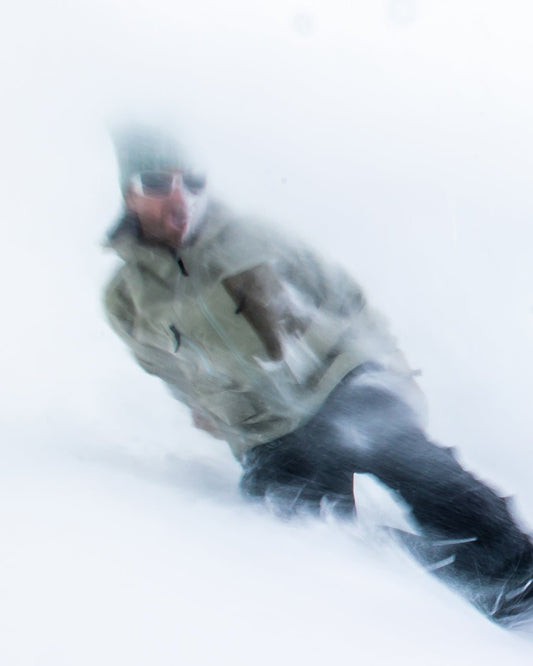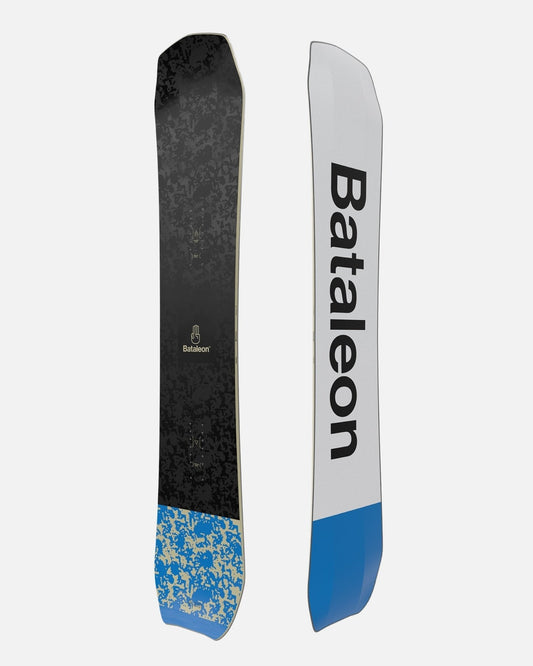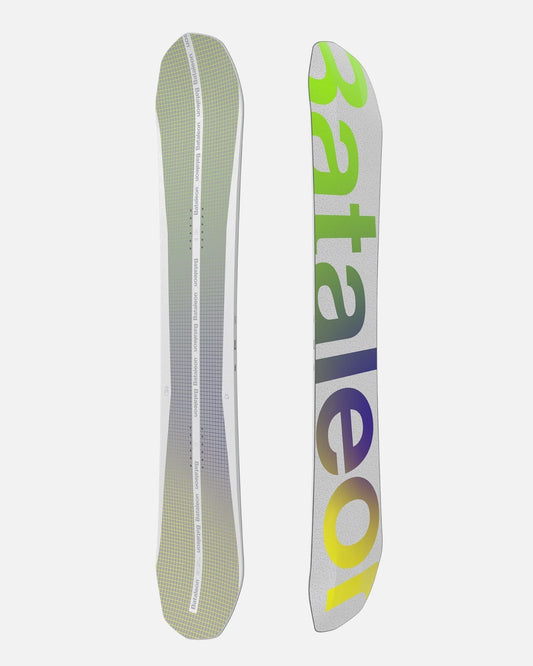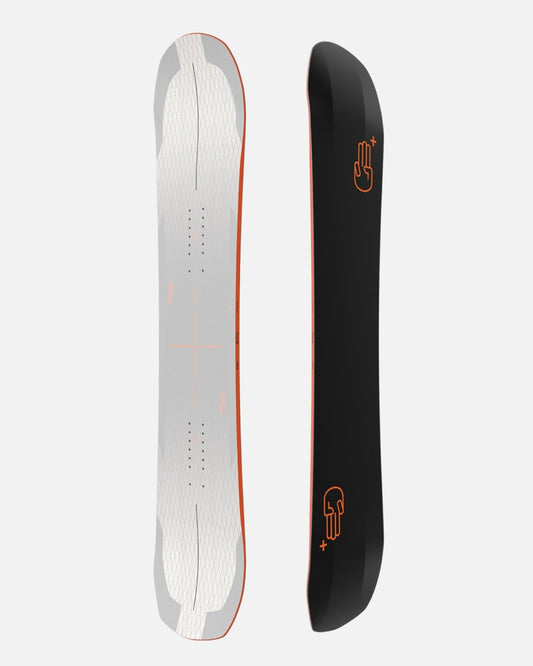Legend has it that buttering was invented by American hellraiser Mike Ranquet back in the early 90s, during a trip to Mt Baker. Snowboarding at that time was increasingly influenced by skating, and Mike was soon joined on the buttering trip by guys like Noah Salsnek and Terje Haakonsen. In fact without trucks, riders were free to come up with even more creative boardslides, and those early videos are full of nose spins, bonks, shifties and other flatland jibbery.
Why 3BT Snowboards Are The Best For Buttering
History of Buttering
Legend has it that buttering was invented by American hellraiser Mike Ranquet back in the early 90s, during a trip to Mt Baker.
“I was practicing lipslides on ledges,” recalls Mike. “Craig Kelly saw me do it and exclaimed, ‘That's dumb!’ Later that night at dinner, Craig started asking me what I was doing and I said I was trying to do a lipslide. He came right back and said, ‘Looks like you're buttering a muffin to me.’ The whole table fell over laughing, but without knowing it Craig coined the term.”
Snowboarding at that time was increasingly influenced by skating, and Mike was soon joined on the buttering trip by guys like Noah Salsnek and Terje Haakonsen. In fact without trucks, riders were free to come up with even more creative boardslides, and those early videos are full of nose spins, bonks, shifties and other flatland jibbery.
Buttering fell out of fashion for a while as the boards got stiffer and the jumps got bigger, but today it’s back on trend along with dungarees and Chandler Bing as a new generation realise just how much fun you can have pressing the crap out of that nose and tail.
What Makes A Snowboard Good For Buttering?
Typically, the best shape of snowboard for buttering is a true twin. The identical nose and tail mean you can take off or land switch, pop nollies and generally chuck the board around as much as you like. Great examples are the Wallie and the Evil Twin.
Size wise, it’s better to go short. This will tip the balance towards maneuverability over speed and stability.
A soft flex like that found on the park-oriented Blow and Disaster is a definite bonus, because it helps you to load the nose and tail more easily. The same trait will also help you up your rail game (think 5-0s and nose presses).
All that said, buttering is a creative pursuit and individual riders express themselves differently. If you’re Tyler Chorlton then you might want a playful directional board like the Party Wave that lets you mix next level carving on hardpack with epic backcountry performance – throwing in some piste and powder butters along the way.
The good thing is, buttering is easier on pretty much any Bataleon compared to other snowboards – and the reason is 3BT.
The Future of Buttering: Triple Base Technology (3BT)
The trick to nose slides, shifties and other flatland tricks is edge control. When you’re rotating across the slope, it’s important to adjust your weight constantly to avoid hooking up.
Triple Base Technology works by introducing uplifted sides. Between your feet the base is flat, giving you a solid platform, but towards the wide points at the nose and tail the uplift increases, raising the contact points off the snow.
The result is that it’s simply way harder to catch your edge – even when you’re doing you’re doing your ninth consecutive nose spin.
Other manufacturers try to achieve a similar effect through unorthodox profiles like reverse camber, but these have some significant downsides. Most notoriously, rockered boards don’t feel as lively. Because all our snowboards blend 3BT with tip-to-tail positive camber, they offer heaps of pop; in fact the narrower centrebase helps channel your energy into the nose and tail for even more ollie power – ideal for throwing a back one to nosepress to cab 3 out!
Click here for a more in-depth look at Camber vs Rocker vs Triple Base Technology.
Over the years we have perfected this 3D approach to board design. Our new SideKicks dramatically increase the amount of uplift at the wide points, making turn initiation smoother and improving float in powder (a bit like the hull of a boat). Of course, this ‘bowl’ effect also makes it even easier to roll around the nose and tail when buttering. You’ll find SideKicks on many of our most popular boards including Goliath, the Wallie and the Evil Twin.
Conclusion - what is the best snowboard for buttering?
The best snowboards for buttering are typically shorter, softer and twin shaped. In other words, classic park boards.
If you enjoy carving though, a playful volume-shift board like the Party Wave will still let you throw it around and bend the nose. Or for powder butters, nothing can beat the Pow 3BT nose on the ThunderStorm for example.
Triple Base Technology (3BT) makes buttering way easier, because you’re less likely to catch an edge and still enjoy all the pop of a classic camber profile.
All Snowboards
Frequently asked questions about snowboards designed for buttering
FAQ
I’m looking at a playful board to play around on the slopes with. Buttering and such. I’m looking at the Disaster/Disaster+ models, what is the main difference between these two?
I’m looking at a playful board to play around and butter on the slopes with. Which one should I have a look at?
How does Triple Base Technology help my buttering compared to regular camber snowboards?
Triple Base Technology is largely seen as a benefit when it comes to buttering. Due to the contour of the base, boards with 3BT are a bit more forgiving and are less likely to hook or catch an edge than flat snowboards. This will help you improve your buttering skills and reduce hooking – leading to faster progression.
Buyers Guide
View all-
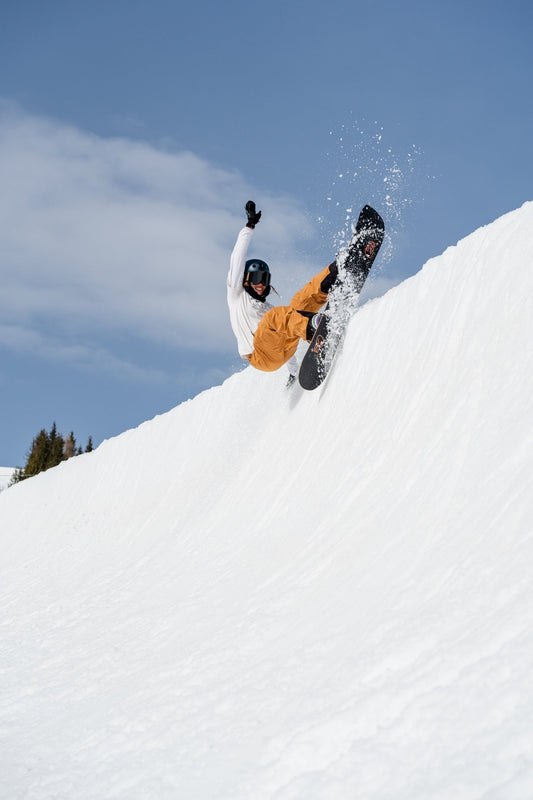
-
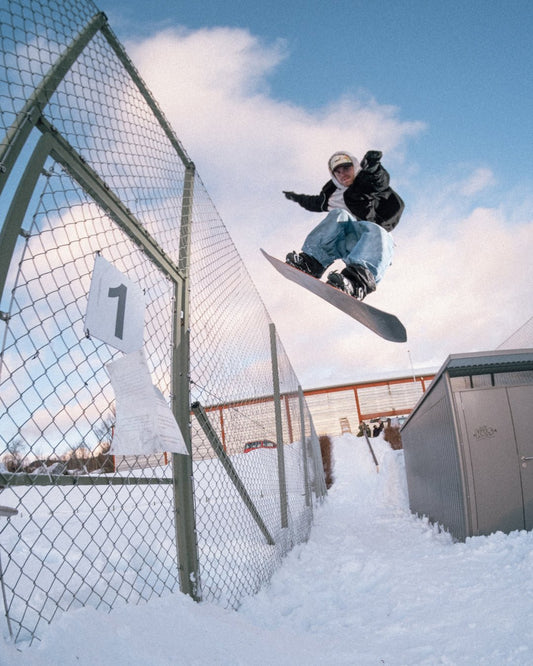
Bataleon's Best Freestyle Snowboards
Up your game in the park, on the street or in the backcountry. Check out our freestyle snowboards.
Bataleon's Best Freestyle Snowboards
Up your game in the park, on the street or in the backcountry. Check out our freestyle snowboards.
-
